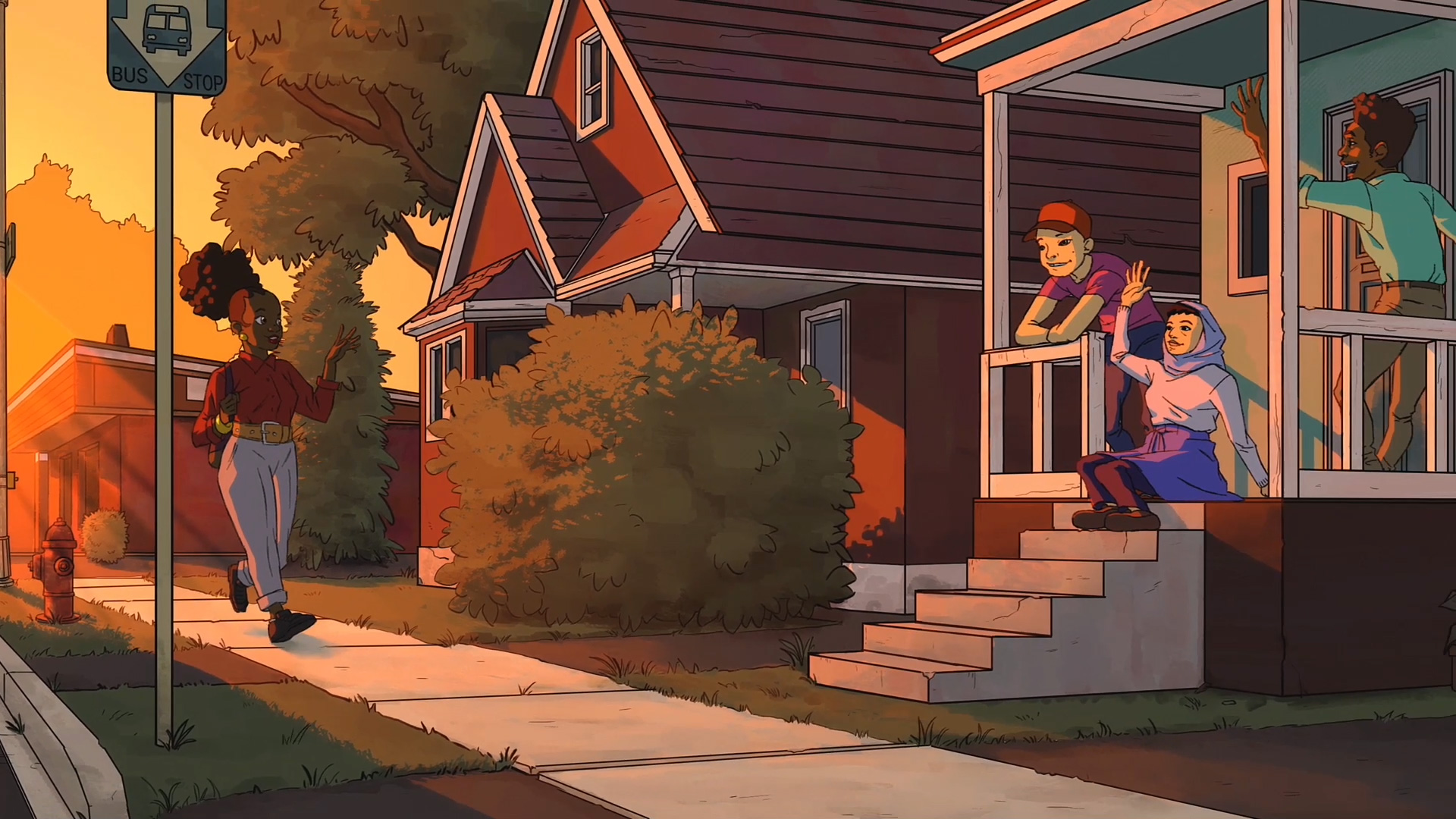Some video games allow you to steal cars and build expansive crime syndicates. Others leave you sobbing in your room at 3am after making a judgement that has irrevocably damaged a character that you deeply care about. For the latter, Life Is Strange has you covered.
The Life Is Strange franchise, starting in 2015, has made its name through tactful handling of complex topics including mental health, violence against women and racism. Moving away from the white, cisgender, straight male stories of gaming’s mainstream, Life Is Strange uses choice-based narratives and detailed characters to place gamers in its cast’s emotive shoes.
With the latest instalment, Life is Strange: True Colours, the game moves from evoking empathy towards making empathy a central theme. Alex, the game’s protagonist, arrives at the idyllic Haven Springs to reunite with her estranged brother. Here she is met by tragedy and the troubles of a working-class town over-reliant on a mining corporation. Alex’s superpower — an ability to read, experience and manipulate the emotions of her peers — makes her life even more complicated.
According to Felice Kuan, lead writer at Deck Nine — an indie video game development company dedicated, in its own words, “to forging stories and gameplay into transformative entertainment experiences” — Alex’s power was “the first piece of the game decided”. While receiving feedback to True Colours’ predecessors, Felice and her team noticed fans’ attitudes towards certain characters changed once gamers got to play as them. Life Is Strange 1’s supporting character, Chloe, who led its prequel, was one such character. A young rebellious girl, Chloe’s characterisation touched on mental health struggles, drug use and family trauma. “People outside of Chloe’s demographic were resonating with her,” Felice says. “We had 40-year-old men writing to say that it was really meaningful to play as her. Even people who hadn’t liked Chloe in the original game, once they played as her and saw her perspective, it changed how they felt about her”.
In its latest iteration, through protagonist Alex, we can see the positive and negative sides of empathy, a meta-commentary of sorts on the franchise’s players. Alex’s empathy allows her to provide support and catch details others would miss. In other scenarios however, her power overwhelms and is too much for her to bear. Felice explains that Alex starts in a place where she “subsumes her own needs” to tune into the feelings of those around her. “We were interested in showing growth that doesn’t say ‘no more empathy’,” Felice says, “she doesn’t lose her powers, but she grows to have a much more healthy relationship with it.”
True Colours’ emphasis on empathy is coming at a prescient time, when gaming is seen not just as a hobby or entertainment, but as a vehicle for social and political change. In recent years, titles like 11 Bit Studios’ This War of Mine and Lucas Pope’s Papers Please have attempted to teach audiences about war-time violence and immigration respectively through immersive gameplay. Gaming engine Unity is so committed to the idea of games for social change it has launched Unity for Humanity, a grant that gives money to projects to “expand their capacity and inspire meaningful change”.
One recipient of the 2020 Unity for Humanity grant is Dot’s Home. Dot’s Home tells the story of Dot, a young Black woman living in Detroit who travels through time and witnesses the effects of racist housing policy on different generations of her family. The game is part of the Rise-Home Stories Project, where multimedia storytellers collaborate with grassroots organisations focusing on the intersections of land, housing and race in the US. Set for release this autumn, it’s a game that, like Life Is Strange, uses choice-based gameplay to cast light on real-life difficulties.
For Luisa Dantas and Christina Rosales, of the Dot’s Home team, the game has a goal of validating the experiences of young Black and Brown people by recognising a system that is stacked against them. It also aims to expose this complex system through game mechanics. Dot’s Home tackles subjects like urban renewal, redlining and housing commodification through warm storytelling about a family. “I feel like a game is a perfect vehicle for looking at systems and understanding things like the repercussions of your choices,” Christina says. “The ability to translate this sort of heavy issue and gamify it was really useful for us, and probably the most effective way we could have thought to communicate some things we’re trying to do”.

The makers of Dot’s Home frame games as a tool for empathy differently from much of the dominant discussion. Rather than relying on the idea that empathy is developed from a game allowing you to “walk a mile in somebody else’s shoes”, the Rise-Home team sees Dot’s Home as an opportunity to witness someone else’s experience. “To us, empathy is not about putting someone in the shoes of your protagonists, but actually having someone occupy a witness role or a friend role,” Christina says. “We’re not in any way, shape or form trying to say that the player is in the shoes of say Dot’s grandmother, as she struggles to figure out should she buy a house or rent one or go into debt, right? What we think is that the player is witnessing that and gaining a new understanding”.
Much of what we understand about gaming and empathy is anecdotal, but the area is a popular topic for new academic research. “Already in the past, several studies have shown the potential of video games to increase empathy,” says Dr. Johanna Pirker of Graz University of Technology. Johanna’s research group underwent an initial pre-study earlier this year on the links between empathy and video games to identify the potential for further research.
Johanna believes we must do more research to help game developers harness the empathy-building potential of the medium through identifying “elements and mechanics that might strengthen their game design and understand better the behaviour of players.” She believes that “games can be an important tool to learn” and that emerging virtual reality’s immersive nature will only extend games’ role as “empathy-machines”.
Whilst there are certainly positives to the idea that games can help players to become more empathetic and understanding of the experiences of others, it begs the question of who gets to decide what is worthy of empathy. The gaming industry — with exceptions — is still a world largely dominated by a homogenous group of creators. It’s hard, then, to see games reaching their full potential in this area without more voices getting to share their experience of the world. When diverse perspectives are truly amplified in the gaming world, we will see the extent of what gaming and empathy can do.


